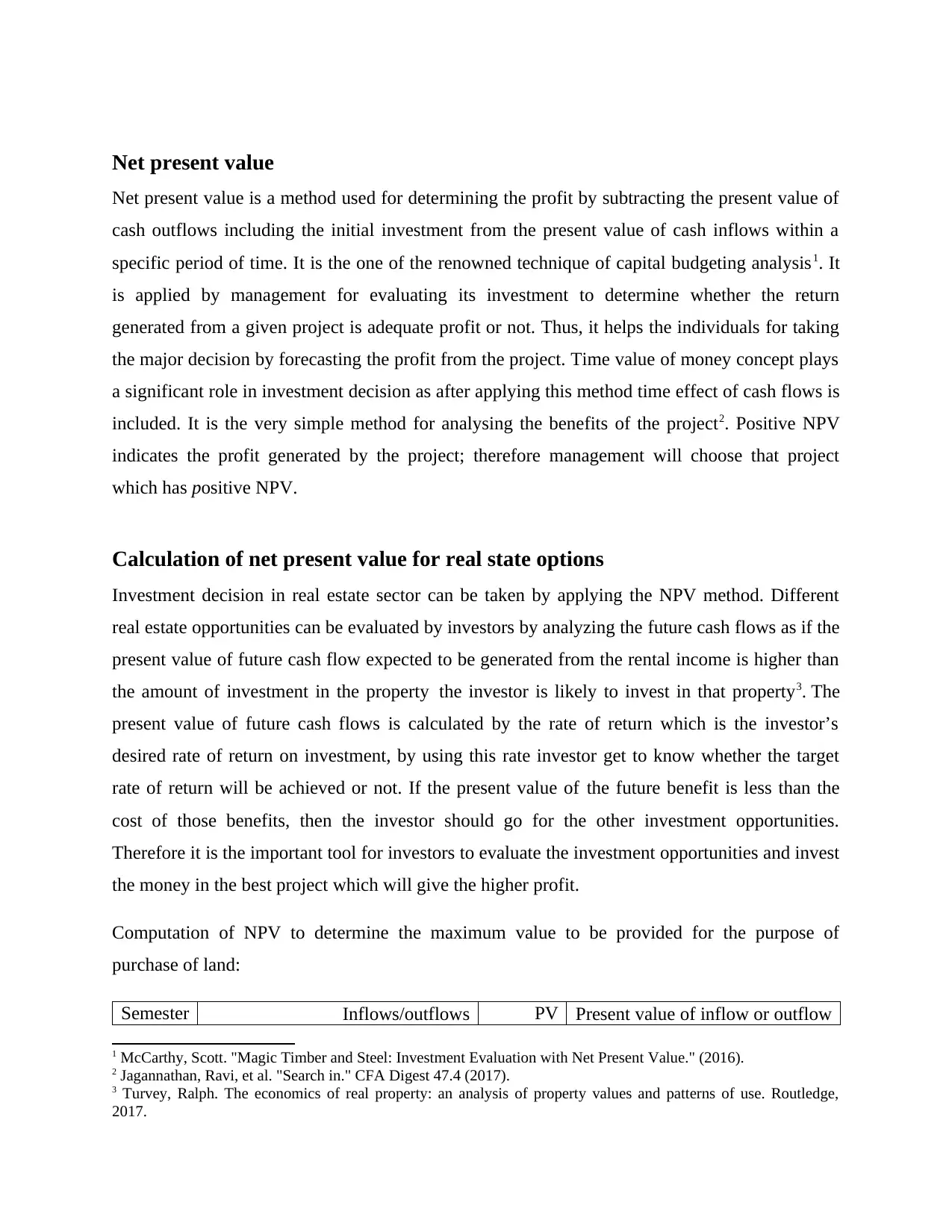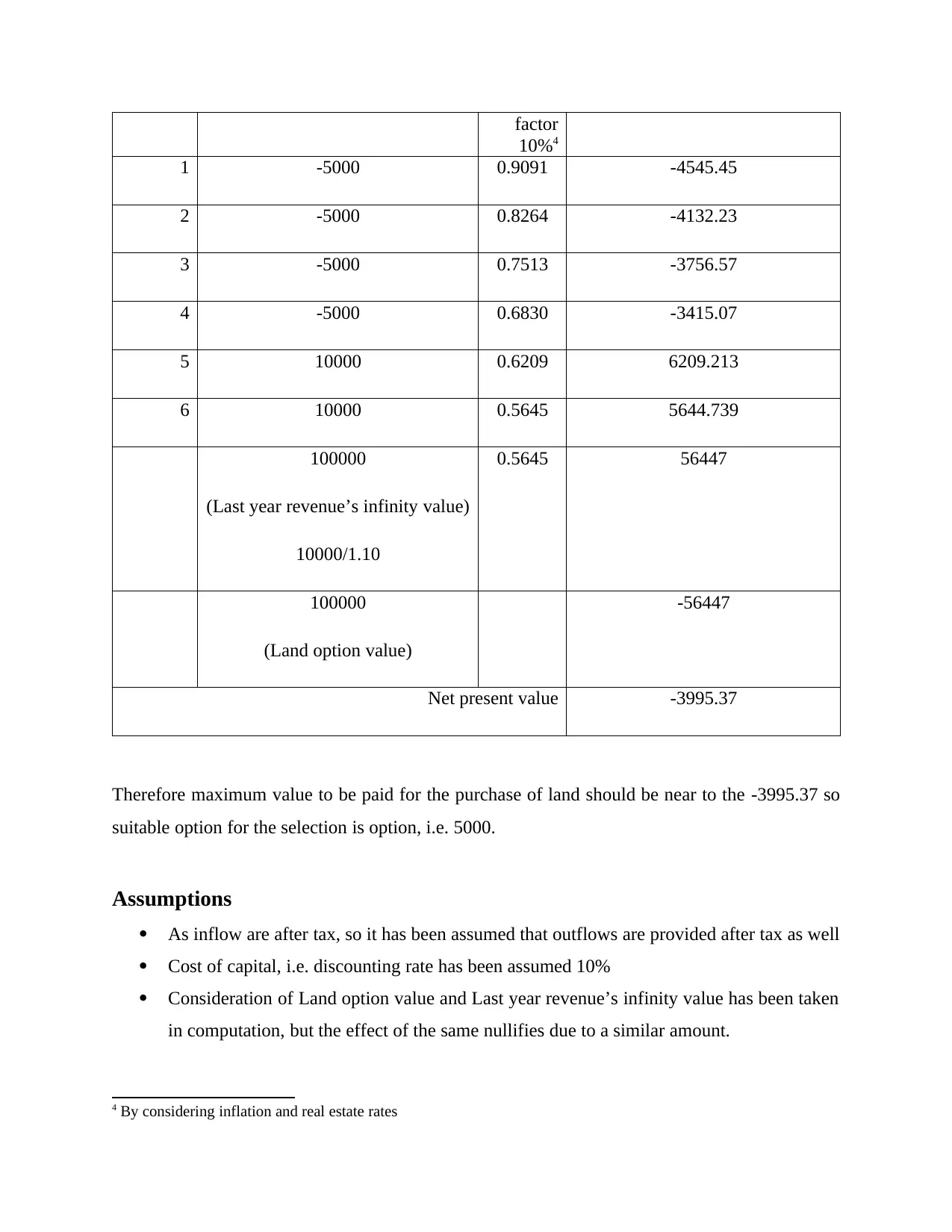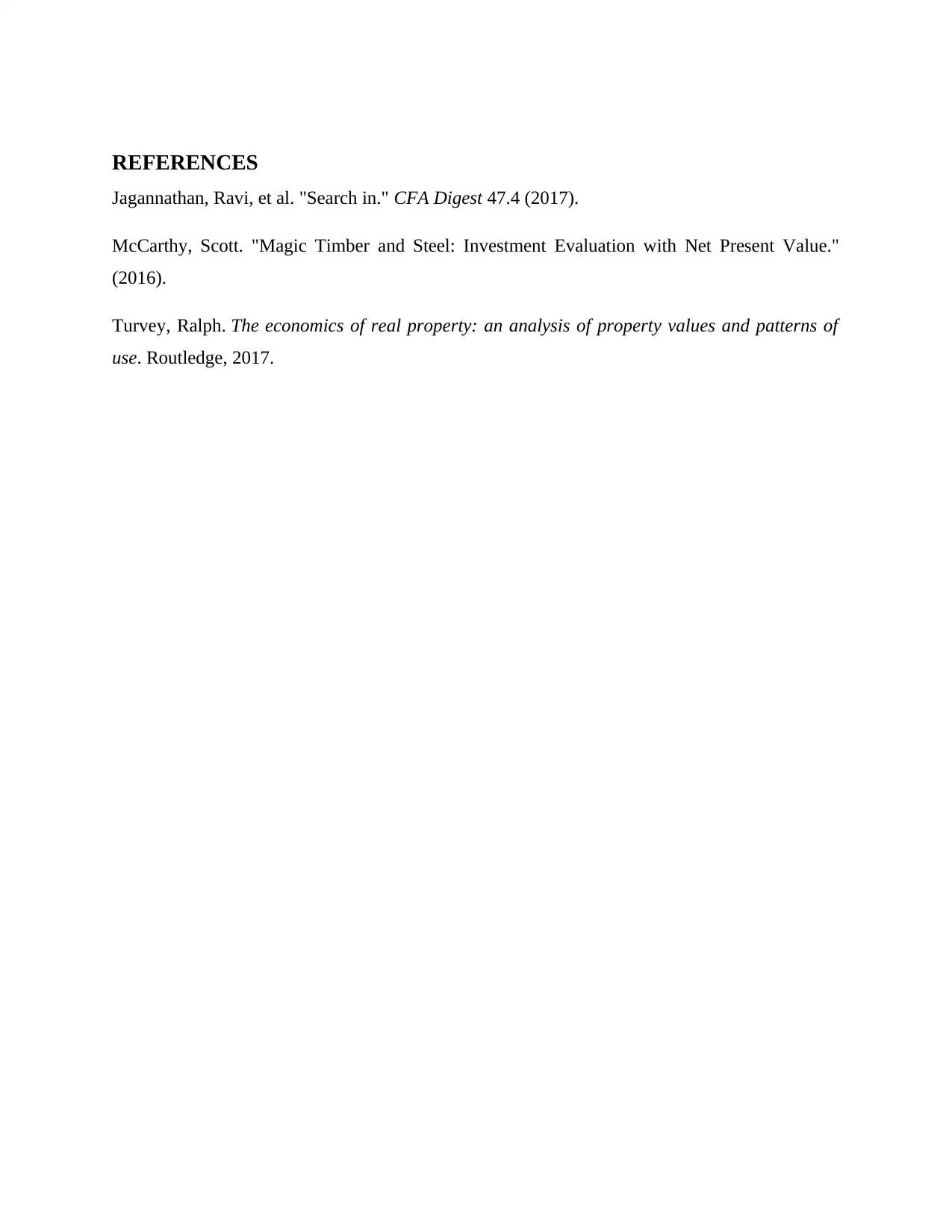Semester 1: Net Present Value in Real Estate Investment Analysis
VerifiedAdded on 2023/06/11
|4
|659
|109
Report
AI Summary
This report provides a comprehensive analysis of the Net Present Value (NPV) method for evaluating real estate investment opportunities. It explains the concept of NPV, highlighting its significance in capital budgeting and investment decisions. The report demonstrates how to apply NPV to assess different real estate options by analyzing future cash flows and discounting them to their present value using a desired rate of return. A detailed computation is presented to determine the maximum value to be paid for land purchase, considering factors like inflows, outflows, present value factors, land option value, and last year's revenue. The analysis includes key assumptions such as after-tax cash flows and a specified cost of capital. The report concludes with a determination of the suitable investment option based on the calculated NPV, alongside references to support the analysis. Desklib offers a wealth of similar solved assignments and past papers for students.
1 out of 4











![[object Object]](/_next/static/media/star-bottom.7253800d.svg)